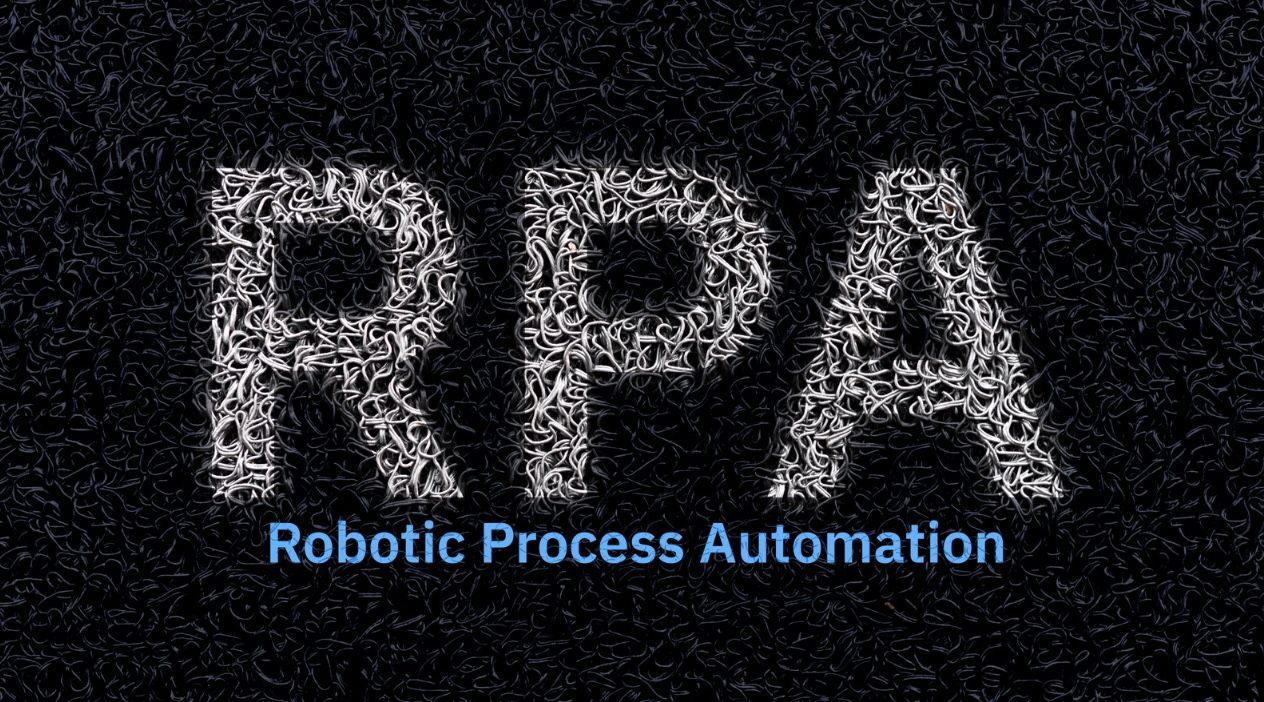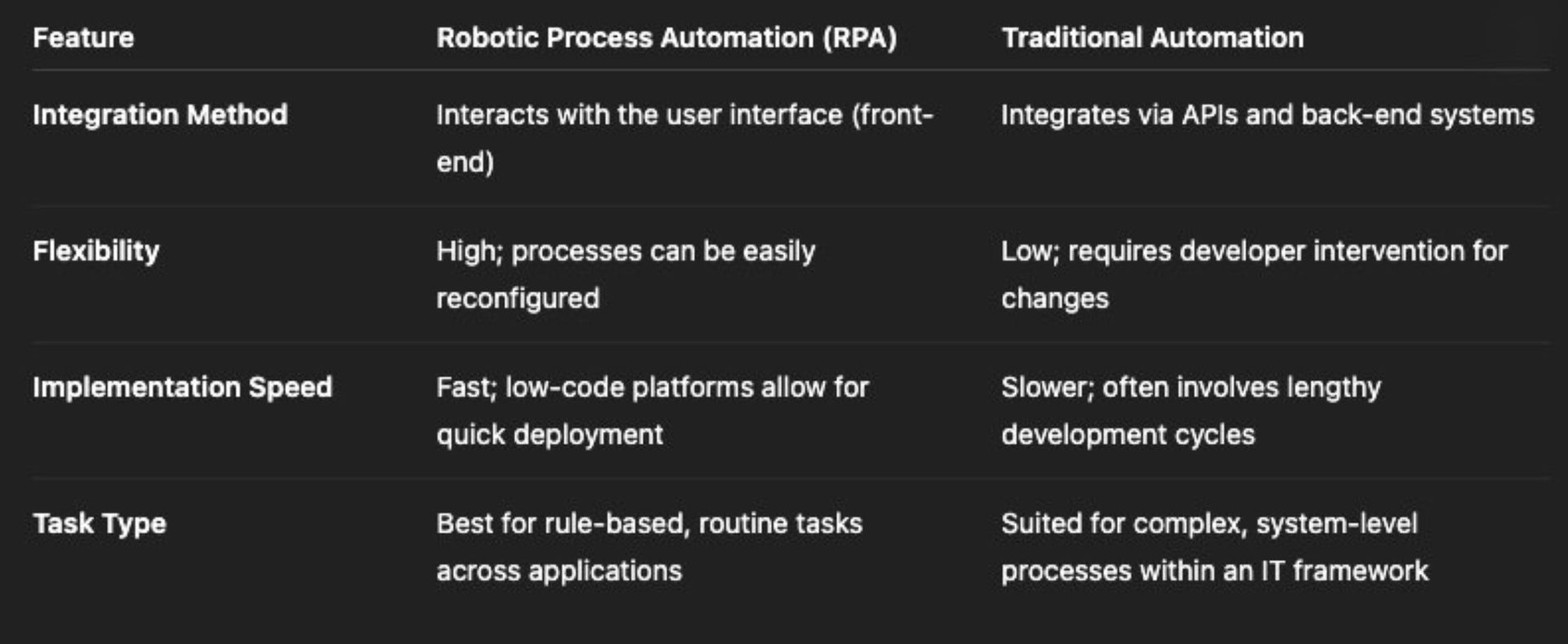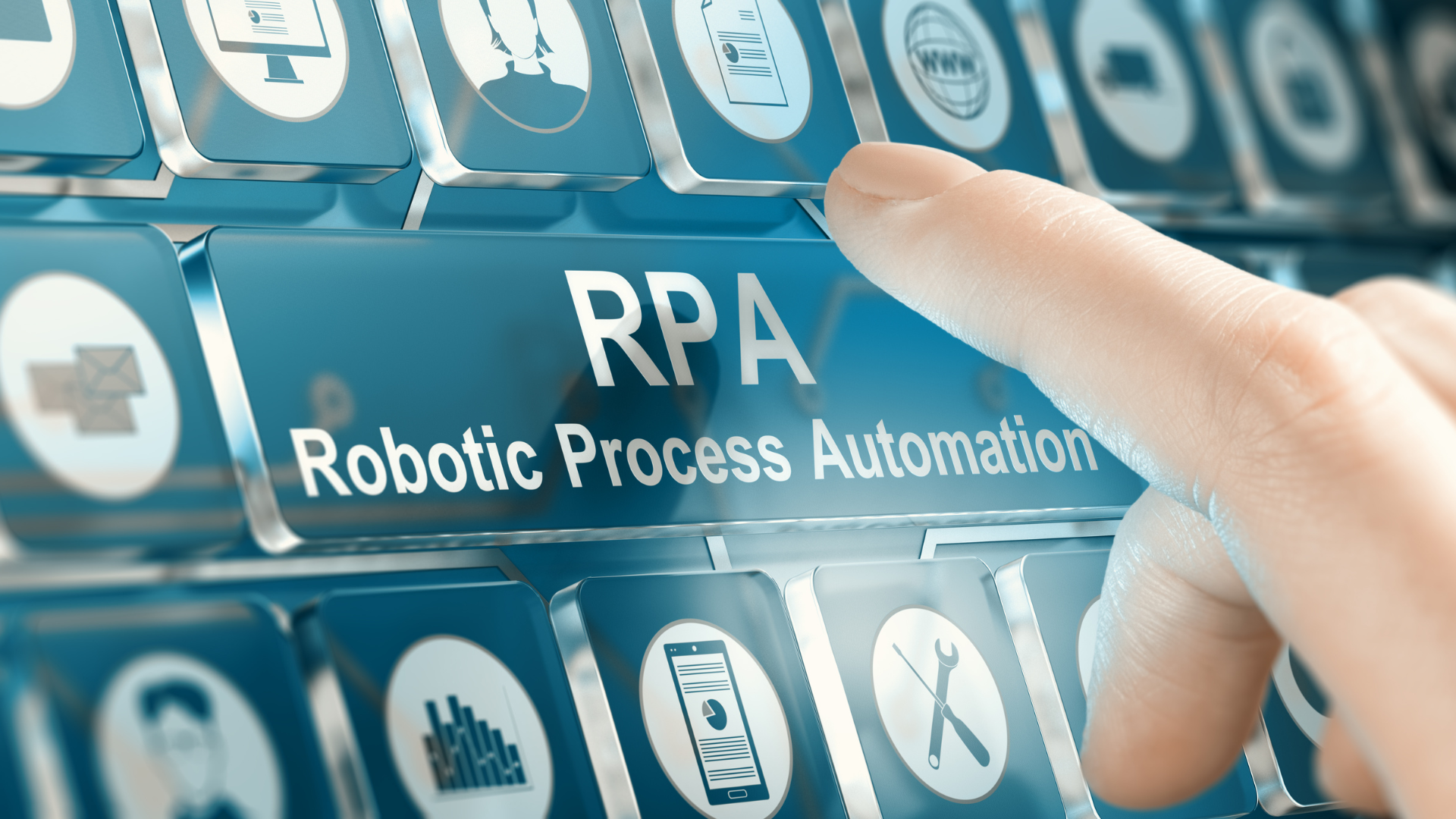Understanding RPA: A Beginner Guide to Automation
Understanding RPA: A Beginner Guide to Automation

Key Highlights
Here are the key takeaways from our guide to Robotic Process Automation (RPA):
- Robotic Process Automation uses software "bots" to mimic human actions and automate repetitive digital tasks.
- This automation technology is designed to handle rule-based work, freeing human employees for more strategic activities.
- RPA bots can significantly boost efficiency, improve accuracy by eliminating human error, and provide major cost savings.
- There are different types of RPA—attended, unattended, and hybrid—to suit various business process automation needs.
- Implementing RPA is a key step in digital transformation, helping businesses improve operations and enhance customer satisfaction.
Introduction
Welcome to the world of automation! If you've ever wondered how businesses can speed up their operations while reducing errors, the answer often lies in Robotic Process Automation (RPA). This powerful automation technology is changing how companies work by taking over repetitive, manual tasks. It's a cornerstone of digital transformation, allowing organizations to become more agile, efficient, and customer-focused. Ready to learn how software robots can revolutionize the way you do business?
What is Robotic Process Automation (RPA)?
So, what exactly is Robotic Process Automation? Simply put, RPA is the use of computer software ‘robots’ to handle repetitive, rule-based digital tasks. These aren't physical robots you see in a factory; they are software programs that operate on a computer. These RPA bots are designed to mimic the way humans interact with applications and information sources, essentially acting as a digital workforce for your business.
The goal of this business process automation is to take over the mundane, time-consuming tasks that clog up your team's day. Imagine a software worker that can log into applications, move files, enter data, and copy-paste information. By deploying this automation technology, organizations can achieve significant cost savings through improved efficiency and allow their employees to concentrate on more valuable business priorities that require human creativity and judgment.
Key concepts behind RPA technology
The core idea behind RPA is its ability to replicate human actions on a computer. The technology works by interacting with the user interface (UI) of any application, just as a person would. If a human can perform a task by clicking, typing, and navigating through screens, an RPA bot can be programmed to do the exact same thing.
This process automation becomes even more powerful when combined with artificial intelligence (AI). While basic RPA follows strict, pre-defined rules, integrating AI and machine learning allows bots to handle more complex scenarios. For example, AI can help bots "read" unstructured documents or understand natural language.
Furthermore, technologies like process mining help identify the best opportunities for automation. By analyzing existing workflows, businesses can pinpoint which repetitive processes will deliver the most value when automated, creating a solid foundation for a successful RPA initiative.
How RPA works in a business setting:
In a typical business setting, RPA robots are put to work on a wide range of repetitive tasks. This includes jobs like retrieving customer profiles, processing orders from multiple systems, and inputting data into different fields. Essentially, any task that is largely driven by rules and schedules is a prime candidate for automation.
By assigning these jobs to a digital workforce, you can transform your business operations. RPA bots are precise, accurate, and never get tired or bored. This means costly mistakes from manual data entry are eliminated, leading to higher quality and more reliable outcomes. The automation capabilities of RPA are scalable, allowing you to handle larger volumes of work without hiring more staff.
Ultimately, this all leads to a better customer experience. With routine tasks handled automatically, your human employees have more time to focus on complex customer issues and provide personalized service. In today's market, where customers expect fast and efficient service, RPA helps your business keep up with growing demands and stay competitive.
Types of RPA Solutions
When exploring RPA, you'll find that not all solutions are the same. There are different types of RPA designed to handle various kinds of task automation. Understanding these distinctions is crucial for selecting the right RPA platform and tools for your specific business needs.
Whether you need a bot to assist an employee in real time or one that works independently in the background, there's a solution available. Let's look at the primary categories of RPA to see how they can support your automation goals.
Attended, unattended, and hybrid automation
RPA solutions generally fall into three categories, each serving a different purpose. The first is attended automation, where RPA bots act as a virtual assistant on an employee's desktop. These bots are triggered by the user and work alongside them to speed up tasks, often requiring human intervention to start or complete a process.
On the other hand, unattended automation involves bots that work completely on their own. These are best for back-office processes that don't need any human input. They run on servers and can execute high-volume, repetitive tasks 24/7 according to a set schedule.
Finally, hybrid automation combines the best of both worlds. This approach uses a mix of attended and unattended RPA bots to automate processes from end to end.
- Attended Automation: Lives on a user's desktop and is activated by a command.
- Unattended Automation: Runs independently to complete tasks based on a rule-based process.
- Hybrid Automation: A combination of attended and unattended bots for comprehensive automation.
Intelligent vs. traditional process automation
The evolution of RPA has led to a distinction between traditional and intelligent automation. Traditional process automation, or basic RPA, is excellent at handling simple, rule-based tasks that involve structured data. It follows a pre-programmed script without deviation.
Intelligent automation (IA), however, takes task automation to the next level by incorporating artificial intelligence and machine learning. This allows bots to handle more complex work, such as interpreting unstructured data from emails or documents and making decisions based on what they've learned.
Think of it this way:
- Traditional Automation: Relies on structured inputs and predefined logic.
- Intelligent Automation: Uses unstructured inputs and can develop its own logic.
- IA brings more human-like capabilities to bots, like reading, listening, and communicating, by using technologies like Optical Character Recognition (OCR) and Natural Language Processing (NLP).
How RPA Differs from Traditional Automation Tools
It's common to wonder how RPA tools differ from traditional automation. The key difference lies in how they integrate with your existing systems. Traditional automation technology often requires deep integration through APIs and significant development work on the back end.
In contrast, RPA works primarily on the front end, interacting with applications through the user interface (UI)—just like a person would. This "surface-level" integration makes RPA faster to implement and more flexible than many older forms of automation. Let's explore these differences further.
Key differences and advantages
RPA software offers several distinct advantages over traditional automation, making it a powerful tool for digital transformation. One of the biggest benefits is its ease of implementation. Since it operates on the UI level, it doesn't require changes to underlying legacy systems, which significantly reduces deployment time and cost. This allows businesses to see a return on investment much faster.
This flexibility makes RPA ideal for automating a wide range of routine tasks that were previously difficult to address with traditional methods. While traditional automation is better suited for deep, complex tasks within a single system, RPA excels at orchestrating processes that span multiple applications. This approach leads to substantial cost savings and frees up your team to focus on what matters most.


Integrating RPA with existing systems
One of the software tools that might require a complete overhaul of your IT infrastructure, RPA works with what you already have. This is a huge advantage for businesses that rely on a mix of modern and legacy applications.
RPA can connect to your systems in a couple of ways. The most common method is through the front-end user interface, where the bot mimics human clicks and keystrokes. However, RPA can also integrate through back-end connections to databases and enterprise web services, offering even more robust process automation capabilities.
This flexibility ensures that you can automate business operations without disrupting them. Whether your processes involve a CRM, an ERP, or a custom-built application, RPA can bridge the gaps between them, creating a unified and efficient workflow.
Text button to change the font, color, size, format, and more. To set up site-wide paragraph and title styles, go to Site Theme.
Main Benefits of RPA in Business
The benefits of RPA in business are both significant and measurable. At its core, process automation with RPA is about doing more with less. By deploying software robots to handle manual work, you can dramatically boost efficiency and achieve substantial cost savings.
But the advantages don't stop there. RPA also improves accuracy, enhances compliance, and even boosts employee morale by removing monotonous tasks from their workload. Let's examine some of the main benefits you can expect from implementing RPA.
Efficiency and productivity improvements
One of the most immediate benefits of RPA is a massive boost in efficiency. Software robots work exceptionally fast—much faster than a human performing the same task. A process that might take a person hours to complete can often be finished in just minutes by a bot. This speed dramatically cuts down processing times for a wide range of business operations.
This increase in productivity is a key driver of digital transformation. With task automation handling the high-volume, repetitive work, your human employees are free to focus on more strategic and creative activities. They can dedicate their time to problem-solving, innovation, and building customer relationships, which adds far more value to the business.
Ultimately, these improvements in efficiency and productivity lead to significant cost savings. By automating manual processes, you can reduce the need for additional staff to handle growing workloads, allowing your organization to scale more effectively while keeping operational costs down.
Enhancing accuracy and compliance in repetitive tasks
When humans perform repetitive tasks for long hours, mistakes are inevitable. A simple typo or lapse in concentration can lead to costly errors. RPA solves this problem by delivering perfect accuracy every time. As long as the bots are programmed correctly, they will execute tasks with 100% precision, eliminating the risk of human error.
This level of accuracy is especially critical for maintaining compliance. Many industries have strict regulations about how processes must be handled, particularly when dealing with sensitive data. RPA ensures that every step is followed consistently and correctly, providing a clear audit trail that makes it easy to demonstrate compliance.
By automating these processes, you can trust that your data is handled properly and that your operations meet all required standards. This not only reduces the risk of penalties but also builds trust with your customers and stakeholders.
Enhancing accuracy and compliance in repetitive tasks
When humans perform repetitive tasks for long hours, mistakes are inevitable. A simple typo or lapse in concentration can lead to costly errors. RPA solves this problem by delivering perfect accuracy every time. As long as the bots are programmed correctly, they will execute tasks with 100% precision, eliminating the risk of human error.
This level of accuracy is especially critical for maintaining compliance. Many industries have strict regulations about how processes must be handled, particularly when dealing with sensitive data. RPA ensures that every step is followed consistently and correctly, providing a clear audit trail that makes it easy to demonstrate compliance.
By automating these processes, you can trust that your data is handled properly and that your operations meet all required standards. This not only reduces the risk of penalties but also builds trust with your customers and stakeholders.
Common Business Processes Automated by RPA
The automation capabilities of RPA are vast, with potential applications in nearly every department of an organization. From finance and HR to customer service and logistics, there are numerous RPA use cases that can streamline operations. The key is to start with process discovery to Identify which tasks are best suited for automation.
Typically, the best candidates are rule-based, repetitive, and high-volume processes. Let's explore some specific examples of tasks and real-world use cases where business process automation is making a major impact.
Examples of tasks suitable for automation
Curious about what kinds of digital tasks RPA can handle? The possibilities are extensive, but some of the most common applications involve moving and processing information. Think about the daily activities in your office that are predictable and don't require much critical thinking.
These tasks are perfect candidates for automation. Automating them frees up your team from monotonous work and reduces the chance of errors.
Here are just a few examples of tasks that are ideal for RPA:
- Data entry: Copying information from one system and pasting it into another.
- Form filling: Automatically populating forms with data from spreadsheets or databases.
- Customer support: Answering frequently asked questions with chatbots.
- Human resources: Processing new hire information and creating user credentials.
- Supply chain management: Tracking shipments and updating inventory records.
- Report generation: Creating standardized reports on a daily or weekly basis.

Real-world use cases from leading industries
RPA is not just a theoretical concept; it's delivering real value in businesses today. In financial services, for instance, banks are using RPA solutions to automate account reconciliations, process loan applications, and detect fraudulent activity. This speeds up critical processes and enhances security.
In the world of logistics, companies are using RPA to manage their supply chains more effectively. Bots can track shipments, process invoices, and manage inventory levels in real time, ensuring that goods move efficiently from point A to point B. These digital transformation efforts help reduce operational costs and improve delivery times.
Even customer service has been transformed by RPA. Many companies now use chatbots to provide 24/7 support, answering common questions and resolving simple issues instantly. This allows human agents to focus on more complex and emotionally nuanced customer interactions.
Industries Adopting RPA Technology
The adoption of RPA technology is soaring across a wide range of industries. Its flexibility and ease of integration make it a valuable tool for any organization looking to accelerate its digital transformation journey. From highly regulated sectors like finance to fast-paced environments like retail, the use cases for RPA are nearly endless.
This widespread adoption demonstrates just how versatile RPA is. Let's look at how specific industries are leveraging this technology to improve their operations and gain a competitive edge.
Financial services, healthcare, and manufacturing
In financial services, RPA is a game-changer. Banks and insurance companies use it to automate everything from monthly reporting and mortgage processing to fraud detection. This streamlines back-office business operations and ensures compliance with strict industry regulations.
The healthcare industry is also seeing huge benefits. An RPA platform can automate appointment scheduling, manage patient records, and process insurance claims. This reduces administrative burdens on medical staff, allowing them to spend more time on patient care.
Manufacturing companies are using RPA to optimize their supply chains and production lines. Common applications include invoice processing, inventory management, and accounts payable automation. This helps manufacturers reduce costs and improve efficiency across their operations.
Retail, telecom, and logistics applications
The retail sector leverages process automation to enhance the customer experience and streamline operations. RPA bots manage inventory, categorize products, analyze sales data, and even automate marketing campaigns, helping retailers stay competitive in a fast-moving market.
In the telecom industry, RPA is used to manage networks, onboard new customers, and handle debt collection. By automating these processes, telecom companies can improve service quality and reduce operational expenses across their enterprise applications.
Logistics is another industry where RPA shines. It's used for scheduling shipments, tracking packages, processing orders, and managing supply and demand planning. This level of automation is essential for a sector that relies on speed and accuracy to succeed.
Challenges and Limitations of RPA Implementation
While RPA offers incredible benefits, the journey to a successful RPA implementation is not without its challenges. Organizations can face hurdles ranging from technical issues to cultural resistance. Recognizing these potential limitations is the first step toward overcoming them.
Fortunately, with proper planning and a commitment to best practices, most of these challenges can be managed effectively. Let’s explore some common obstacles and how you can navigate them to ensure your automation project is a success.
Common hurdles faced during adoption
One of the first hurdles in an RPA journey is setting realistic expectations. RPA is a powerful tool, but it's not a magic solution for every problem. Another significant challenge is getting buy-in from the human workforce, as employees may fear that automation will replace their jobs.
From a technical standpoint, selecting the right manual tasks to automate can be difficult. Not all processes are good candidates; for example, complex use cases that require creativity or judgment are not a good fit. Similarly, processes that rely heavily on unstructured data can be challenging for basic RPA bots to handle without AI capabilities.
Here are some common hurdles to watch out for:
- Wrong Process Choice: Automating a flawed or overly complex process can lead to failure. Using process mining can help identify the best candidates.
- Employee Resistance: A lack of clear communication can cause fear and backlash.
- Scaling Issues: Moving from a pilot project to enterprise-wide automation requires a solid strategy.
- Maintenance: Bots need to be maintained and updated as applications change.
Best practices for overcoming RPA challenges
Overcoming RPA challenges starts with laying a solid foundation. One of the most important best practices is to develop a clear and strategic roadmap. Don't just automate for the sake of automation; align your RPA goals with your broader business objectives.
Engaging in thorough process discovery is also crucial. Use tools and techniques to identify and analyze processes that are truly ripe for automation—those that are rule-based, stable, and high-volume. This ensures you're investing your resources where they will have the greatest impact. Involving IT early and often is also key to integrating with enterprise web services and ensuring security.
For long-term success, focus on governance and continuous improvement.
- Establish a Center of Excellence (CoE): This central team can set standards, manage governance, and support scaling efforts.
- Communicate Transparently: Engage your employees, explain the benefits, and show them how RPA will augment their roles, not replace them.
- Start Small and Scale: Begin with a few high-impact automations to prove value, then expand from there.
Conclusion
In conclusion, understanding Robotic Process Automation (RPA) is essential for businesses looking to enhance efficiency and streamline operations. By embracing RPA technologies, organizations can automate repetitive tasks, improve accuracy, and ultimately free up valuable human resources to focus on more strategic initiatives. As various industries increasingly adopt RPA solutions, the benefits become evident, leading to significant productivity gains and competitive advantages. However, it’s crucial to be aware of the challenges that may arise during implementation and to adopt best practices to mitigate them. If you're interested in exploring how RPA can revolutionize your business processes, get in touch for a free consultation to discover tailored solutions that fit your needs.
Frequently Asked Questions
Which RPA software solutions are most popular today?
The most popular RPA software solutions are typically user-friendly and offer low-code or no-code development. When choosing an RPA platform, look for software tools that provide easy integration with your existing systems, robust security features, and scalability to support intelligent automation as your needs grow.
What skills do I need to start a career in RPA?
To start a career in RPA, a blend of business and technical skills is beneficial. An understanding of business process automation is key. While knowledge of machine learning can help with advanced projects, many modern RPA tools are designed for non-technical users, making an understanding of digital systems and strong problem-solving skills most important.
How do companies measure the ROI of RPA implementation?
Companies measure the ROI of RPA by tracking improvements in key metrics. This includes direct cost savings from reduced manual labor, increased productivity from faster process completion, and enhanced accuracy, which lowers the cost of errors. These factors quantify the value of their process automation and digital transformation efforts.



